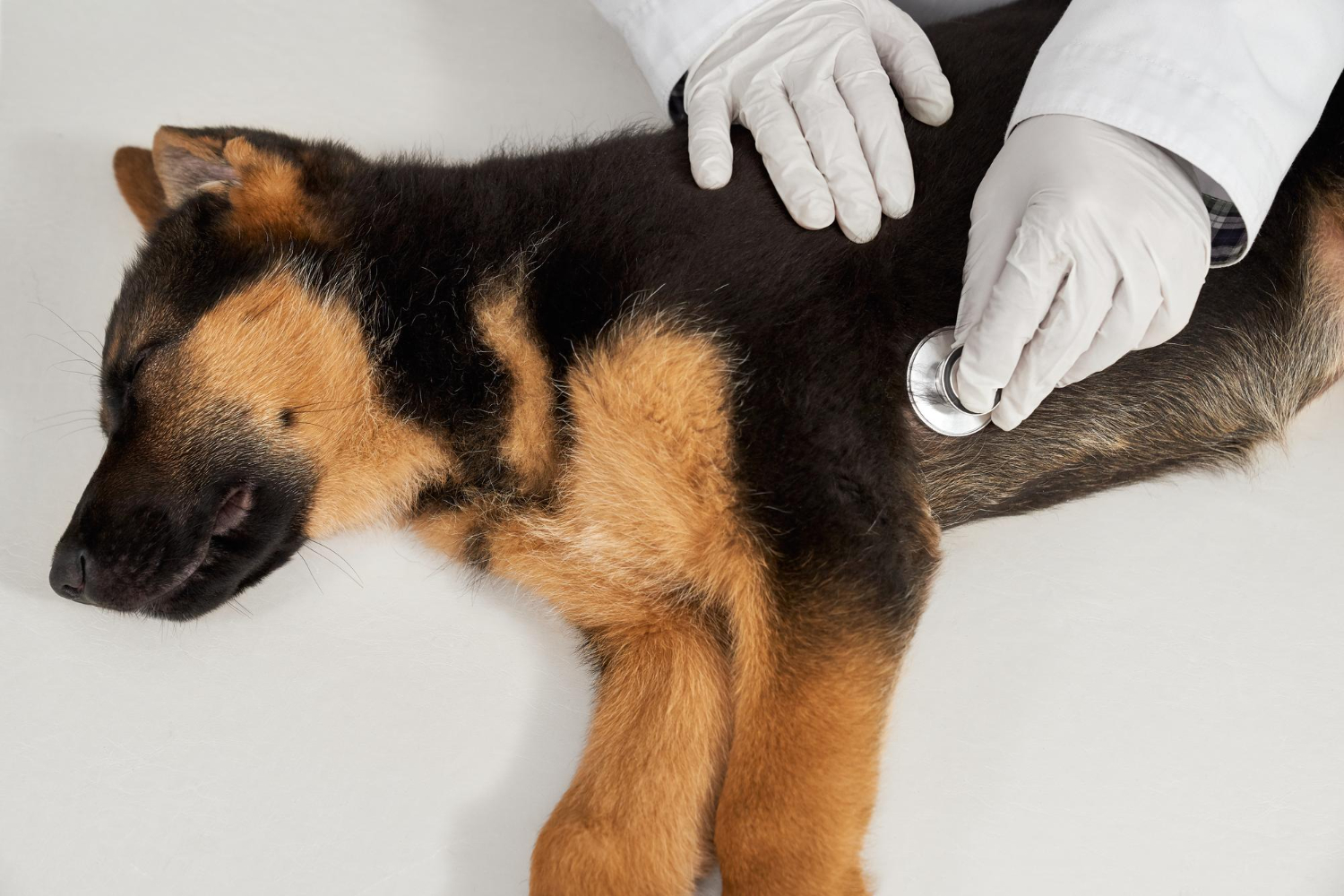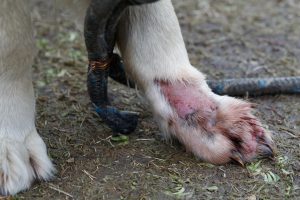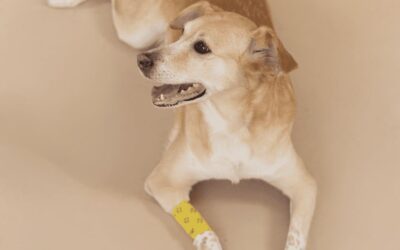Bacterial & Fungal Skin Infection in Dogs

You’re out at the park with your dog on a warm, humid day. Your pup is having a blast, splashing around in a muddy spot by the pond. Later that night, you notice your dog keeps scratching the same spot on their leg. By the next day, you see that area looks red and irritated, and even a bit of hair is missing. This could be the start of a bacterial or fungal skin infection—probably picked up from the muddy water or dirt.
Bacterial and fungal skin infections in dogs are more common than you might think, and they can sneak up on you just like that. Whether it’s from environmental exposures like dirty water, a compromised immune system, or even poor grooming habits, these infections can cause your dog much discomfort if not caught early.
To help you stay on top of your dog’s health, this guide will cover everything you need to know about the causes, symptoms, diagnosis, and treatment of bacterial and fungal skin infections in dogs.
Common Causes of Bacterial and Fungal Skin Infections in Dogs
Bacterial and fungal skin infections in dogs can have many causes. Knowing these is key to preventing and treating them. Here are some of the most common culprits:
- Environmental factors:
- Exposure to contaminated soil, water, or vegetation
- Contact with other infected animals
- Warm, humid environments that promote bacterial and fungal growth
- Compromised immune system:
- Underlying health conditions like diabetes, cancer, or autoimmune disorders
- Medications that suppress the immune system
- Stress and poor nutrition
- Skin injuries or wounds:
- Cuts, scratches, or punctures that allow bacteria or fungi to enter the skin
- Hot spots or other skin irritations
- Allergies:
- Food allergies or environmental allergies that cause skin irritation and inflammation
- Poor grooming practices:
- Infrequent bathing or inadequate drying after bathing
- Matted or dirty fur that harbors bacteria and fungi
Symptoms of Bacterial and Fungal Skin Infections in Dogs
Spotting the signs of bacterial and fungal skin infections in dogs allows you a quick treatment and prevents complications. Here are some common symptoms to watch out for:
- Skin lesions or rashes:
- Red, inflamed patches of skin
- Crusting or scabbing
- Oozing or pus-filled sores
- Hair loss (alopecia):
- Circular or irregular patterns of hair loss
- Thinning or bald patches
- Itching and scratching:
- Excessive scratching, licking, or biting at affected areas
- Restlessness and discomfort
- Odor:
- Unpleasant, musty, or yeasty odor emanating from the skin
- Skin discoloration:
- Reddish, brown, or black discoloration of the skin
- Scaling or flaking:
- Dry, flaky skin or dandruff-like scales
- Thickened or crusty skin:
- Leathery or crusty appearance of the skin
Types of Bacterial and Fungal Skin Infections in Dogs
Bacterial and fungal skin infections have some similarities. But, there are specific types that dog owners should know. Here are some of the most prevalent ones:
- Bacterial infections:
- Pyoderma (skin infections caused by Staphylococcus or Streptococcus bacteria)
- Folliculitis (infection of the hair follicles)
- Impetigo (highly contagious bacterial skin infection)
- Hot spots (acute, moist dermatitis)
- Fungal infections:
- Ringworm (caused by a group of fungi called dermatophytes)
- Malassezia dermatitis (yeast infection caused by Malassezia fungi)
- Sporotrichosis (fungal infection caused by Sporothrix fungi)
- Candidiasis (yeast infection caused by Candida fungi)
Diagnosing Bacterial and Fungal Skin Infections in Dogs
Veterinarians may employ various diagnostic methods for getting precise diagnosis, including:
- Physical examination:
- Thorough inspection of the affected areas
- Evaluation of the extent and severity of the infection
- Skin scrapings or cytology:
- Collecting samples of skin cells, hair, or discharge
- Microscopic examination for the presence of bacteria, fungi, or other pathogens
- Fungal culture:
- Growing and identifying specific fungal species from skin samples
- Bacterial culture and sensitivity testing:
- Identifying the specific bacterial strain and determining the most effective antibiotics
- Biopsy:
- Collecting a small tissue sample for histopathological analysis
- Useful in ruling out other underlying conditions
- Allergy testing:
- Identifying potential allergies that may contribute to skin infections
Effective Treatments for Bacterial and Fungal Skin Infections in Dogs
Once the cause of the skin infection has been identified, it can be treated. This will help your dog feel better and heal. Here are some common treatments for bacterial and fungal skin infections in dogs:
- Antibiotics or antifungal medications:
- Oral or topical antibiotics for bacterial infections
- Oral or topical antifungal drugs for fungal infections
- Prescribed based on the specific type of infection and severity
- Medicated shampoos or dips:
- Containing antimicrobial agents to help control and prevent infections
- Used in conjunction with other treatments
- Topical ointments or creams:
- Containing antibacterial or antifungal agents
- Helps soothe and protect the affected areas
- Stress reduction and environmental modifications:
- Minimizing stress, which can exacerbate skin conditions
- Adjusting living conditions to reduce exposure to potential irritants
Preventing Bacterial and Fungal Skin Infections in Dogs
Treating existing skin infections is crucial, but it’s just as important to prevent them. Here are some steps to reduce the risk of bacterial and fungal skin infections in your dog:
- Regular grooming and bathing:
- Brush your dog regularly to remove loose hair and debris
- Bathe your dog with a mild, veterinarian-approved shampoo
- Ensure proper drying after bathing to prevent moisture buildup
- Maintaining a clean living environment:
- Regularly clean and disinfect your dog’s bedding, toys, and living areas
- Vacuum and remove any potential sources of allergens or irritants
- Prompt treatment of injuries or wounds:
- Clean and disinfect any cuts, scratches, or hot spots
- Seek veterinary attention if necessary
- Avoiding exposure to potential sources of infection:
- Be cautious when introducing new animals or visiting areas with high animal traffic
- Avoid contact with infected animals or contaminated environments
- Regular veterinary check-ups:
- Schedule annual wellness exams to monitor your dog’s overall health
- Discuss any concerns or potential risk factors with your veterinarian
Dealing with a bacterial and fungal skin infection isn’t easy, and it’s tough on your heart and wallet. That’s where pet insurance can really come in handy. It takes a good chunk of the financial pressure off, so you don’t have to stress about making tough choices when it comes to your dog’s care.




